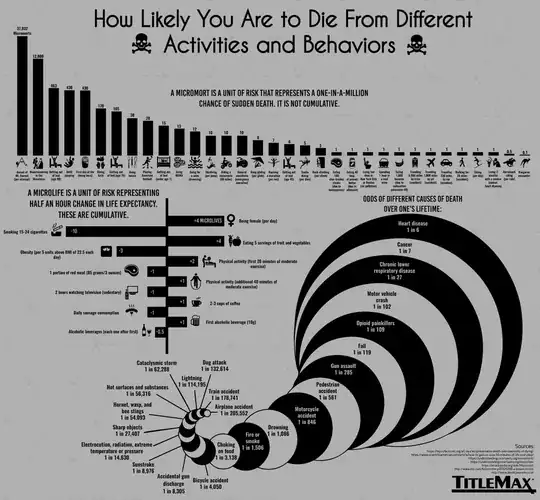I recently read that "there is a $1$ in $5.2^{61}$ chance that the molecules in your hand and table would miss each other, making your hand go through it". To me, it seems completely false, considering electron repulsion and the high density of solids. But, considering my lack of knowledge in quantum mechanics, is it actually possible for this to happen by treating everything as waves?
4 Answers
In my opinion, that source is very unreliable.
Firstly, it totally fails to paint a proper picture. The reason is that although quantum tunneling is possible, the likelihood of your entire hand staying in one piece but tunneling through the table is ridiculously far smaller than (say < 1/101000 times) the likelihood that a small number (say 2) of molecules from your hand tunnels through the table but the others stay on the expected side. So why on earth should we concern ourselves with the likelihood of "our hand passing through the table" if it is nowhere near the second-most likely outcome, or third-most likely, or ...? Your simple classical intuition is perfectly fine, even from a quantum mechanics perspective, because the phrase "your hand" does not refer to a completely precise set of particles anyway so it is really ridiculous to consider quantum tunneling of a few particles 'in' your hand.
Secondly, particles do not "miss each other" when quantum tunneling happens. That phrase is very misleading because it suggests that the particles are like tiny solid objects and they need to 'miss' in order to 'pass'. No, not at all. The wave-function of any particle always extends beyond any finite potential barrier. Whenever you perform a measurement, you are essentially just manipulating the environment to make the particles you are measuring have wave-functions that have a single sharp peak (corresponding to your measurement result). This peak location may lie outside the classically expected region, but it is not because the particle passed through the barrier! It simply localized beyond the barrier!
- 2,937
The basic frame of the world we live in is quantum mechanical. In quantum mechanics the atoms molecules lattices are modeled with wavefunctions, i.e. solutions of specific wave equations, that give the probability of an interaction to happen.
Also in quantum mechanical systems there is a probability, once the wavefunction is known, of tunneling through a barrier. Your hand going through the table would fall into that category.
The table and the hand are composed of order of $10^{23}$ (Avogadro's number) atoms and molecules. In order for your hand to tunnel through one coherent wave function should describe the table and one your hand, so that there could be a probability for tunneling. The number of molecules show how improbable this will be, and I guess something like this was used to get the numbers quoted.
To me, it seems complete false . . . . . . and that is due to you being unable to comprehend the scale of $1$ in $5.2^{61} \approx 5\times 10^{43}$.
Since the Big Bang approximately $4\times 10^{17}$ seconds have elapsed. Now that is a big number but nowhere as big as $5\times 10^{43}$ but the suggested half life of a proton $5\times 10^{41} \,\rm$ is not so far away.
In this context the unit micromort, a unit of risk which represents a one in a million chance of sudden death, might help.
Can you really comprehend the chances of your hand passing through a table and that it means that if you tried the experiment you might have to wait for much longer than the age of the Universe for it to happen?
I think the point being made, if there indeed is one, is that you can at least in principle calculate the probability that every atom in the hand/table system moves at the same exact moment in exactly the right direction and distance so as to allow the hand to pass through the table without their wavefunctions tripping over each other.
Consider now that the age of the universe is about 4.36 x 10^17 seconds and compare that to the probability cited.
- 99,024

